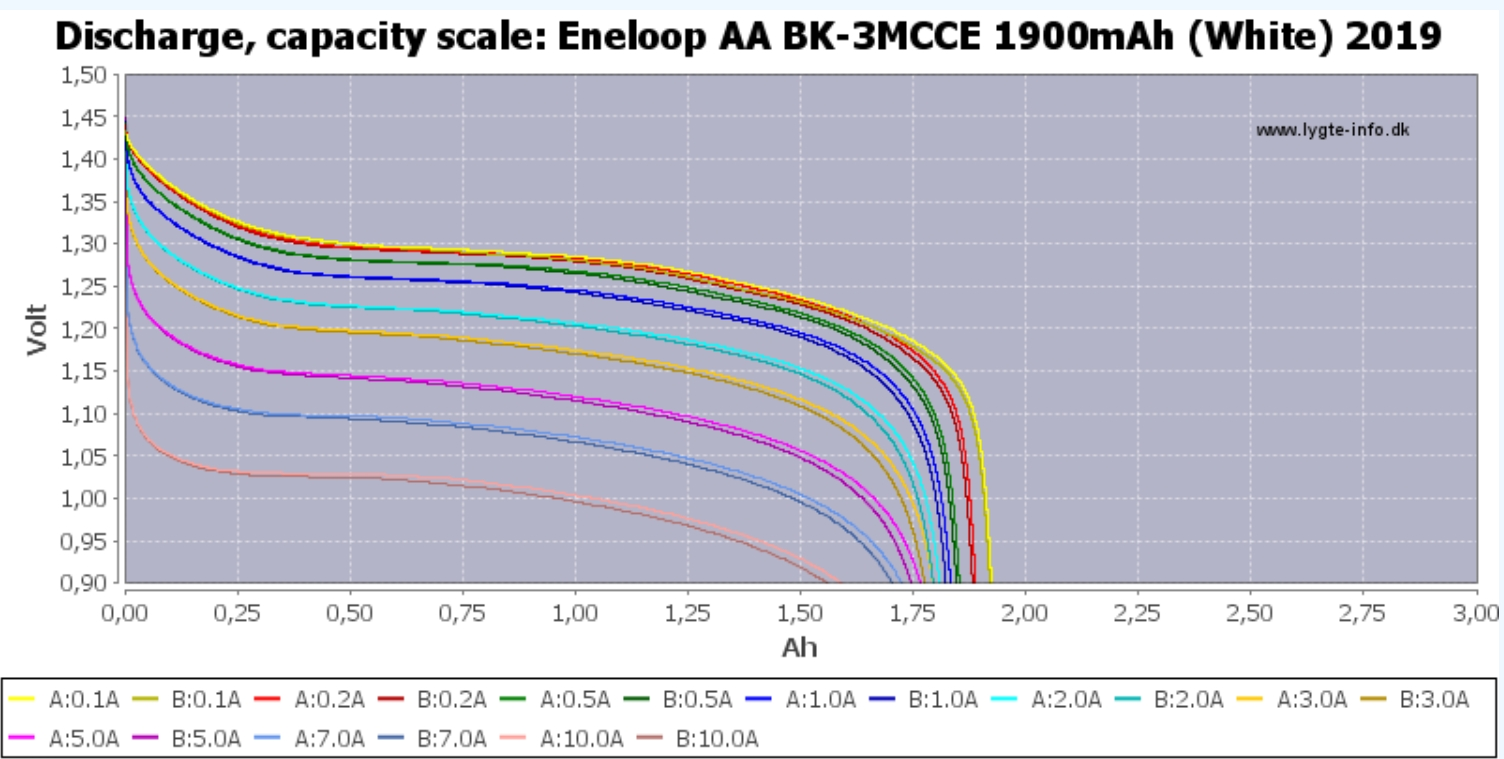To detail a bit more, the MP3431/32 can boost down to 0.8Vin, but it needs 2.7V for startup, and the Attiny1616 needs 1.8V, I believe that usually in AA drivers the MCU is powered by the always on LED boost converter that outputs a constant voltage below the LED Vf when the light is off, this means of course using a boost converter with low Vin and low voltage startup.
Here instead the necessary voltage for the MP3432 startup and the MCU is provided by another small boost converter.
The advantage of using the MP3432 over the available low Vin boost ICs is that it has much better characteristics, the best low Vin boost IC available is probably the (very costly) LTC3425 used in the Zebralight SC5c, likely the most powerful and efficient AA light on the market, if we compare the internal FETs resistance it’s 40 and 50mΩ for the LTC3425 (equivalent 1 phase, because it has 4) vs 6 and 10mΩ for the MP3432, about 7~5times lower which help achieve much higher efficiency and power, although the limit here is the current deliverable by the AA cell, I haven’t tested yet with an Eneloop, only with my bench PSU. According to HKJ discharge curves, it should still be possible to pull quite a bit of current from it :

With the PSU there is a bit of funkyness at 1Aout, the efficiency is significantly lower and sometimes it would pulls very high current, very strange especially since the inductor saturation is higher than necessary, but I’ll see with an Eneloop.
The other advantage is that it has higher output voltage capability, low Vin boost IC usually have a maximum output voltage of ~5.5V, the MP3432 can output as high as 16V, the limitation is the maximum duty cycle, which should be around 93%, meaning 1/(1-0.93) = 14.2Vout at 1Vin, so it should be able to power any LED from 3V to 12V.
Because I wanted high efficiency for both chemistry I didn’t implement a linear regulation or FET PWM dimming when Vin>Vout, thus the big drawback is that it’s a boost only driver, if li-ion capability is desired then a 6V or higher LED must be used, here it is configured for 3S LEDs for the FWAA (I need to figure out how to modify the 3P original MCPCB). Options for a single LED light would be XHP50.3 HI, B35AM for 6V and XHP35 HI for 12V, which would maybe be more adequate for a small reflector and the usual 3535 MCPCB in 14500/AA lights.
The efficiency would probably break the 90% barrier at 1.2Vin 6Vout, and even better at 3Vout, also I had to use a 2mm tall inductor (XAL6020) for the FWAA shallow cavity, a 3mm inductor would be appreciably better, a XGL6020 would also have been better but they are only sold from Coilcraft direct (high shipping and duty fees), thankfully someone from the US will be able to reship some XGL inductors for me to test.




